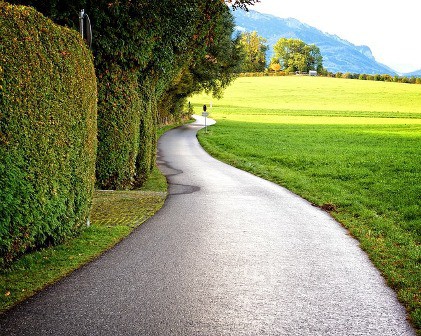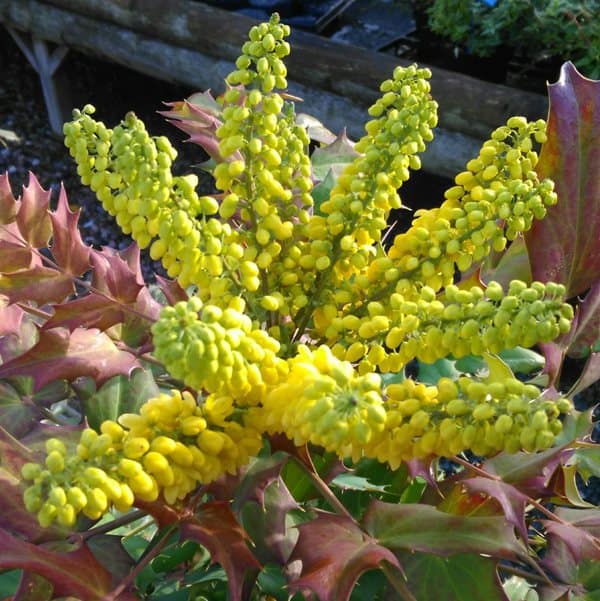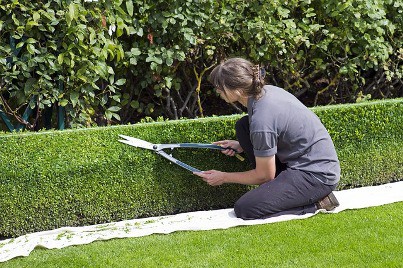Last updated on January 26th, 2022
Our site is reader supported, this means we may earn a small commission from Amazon and other affiliates when you buy through links on our site.
With so many hedging plants available it can be a nightmare choosing the correct plant for the right location, but our guide has been designed so that you can first decide what you want to achieve by planting your hedge and what plants are the most suitable.
Some quick examples of why you might want to plant a hedge:
- To form a boundary structure between gardens.
- To provide privacy in your garden.
- To hide unsightly views, such as industrial estates or your neighbour’s shed (or similar).
- To provide a wind break.
- To reduce noise from passing traffic.
Some hedging plants are more attractive to wildlife. They will provide shelter and nesting opportunities that encourage birds into the garden, such hedging plants include pyracantha, holly and hawthorn which you have probably already noticed on many farm lanes throughout the UK.

What to take into consideration when choosing the best hedging plant
- Do you want an evergreen hedge that doesn’t lose its leaves in the winter? This would be best for circumstances where you may want to form a screen and because deciduous plants become bare in winter and the view may not be obscured as much. Evergreen hedging plants are also useful for reducing noise from traffic.
- Do you want your hedge to eventually be very tall? For example 15ft. Or maybe only you only need a small hedge of around 1-2ft tall. If you want your hedge to eventually be very tall, you may want to choose something such as Leylandii or Laurel plants that grow quickly whilst for a smaller hedge you may want to choose a smaller hedging plant such as buxus which is slower growing and perfect for creating smaller hedges.
- Some hedging plants grow better in wet soils, such as Alder (Alnus glutinosa) and Willow (Salix capraea). Unfortunately there is not really any evergreen hedging plants that will survive in waterlogged soil within the exception of the two already mentioned.
- Is it a shaded location where you are planning to plant your hedge? Not all plants will survive in shade but some that will include Pyracantha, Common Holly, Cotoneaster, Cherry Laurels and Yew.
- Do you want all season interest? Some plants provide berries and these provide colour in winter but also valuable food for birds too.
Types of hedging plants
Instant hedging plants
You can now buy instant hedging plants that have been planted in troughs. They have already been pruned and have knitted together to form a solid wall that will make an instant impact when they are planted. They usually come in lengths of between around 3ft and 5ft and are available in many varieties, from mixed hedges to common hedging plants such as Laurels, Beech, Buxus and many more.
Other hedging plants can also be sold as larger plants. These are not really instant, but they are large enough to plant to form a decent screen straight away.
Bare root hedging plants
Bare root hedging plants are just that, ‘bare root’. They are usually sold between October and March when the plants have gone dormant for the winter. They are usually slightly cheaper and can often be purchased from mail order nurseries. Sometimes they are also sold root balled, which means that they have soil around the roots but are not in pots as they have also been dug up from the fields.
Pot grown hedging plants
Most hedging plants can be purchased in pots at any time of the year and this means they can be planted in summer when bare root plants aren’t available. Be sure to water regularly when planting pot-grown hedging plants.
Below we have a list of plants that are ideal for growing in many different locations, therefore, may be suitable for your own garden
Hedging to deter intruders and provide security
These hedging plants have sharp thorns and so help deter burglars and increase security around your property.
- Pyracantha – Evergreen plants with green leaves and berries in autumn.
- Hawthorn – A shrub with sharp thorns that is deciduous but attracts wildlife into the garden.
- Berberis – Another deciduous shrub that is often available with red or green leaves and has very sharp thorns.
- Ilex (Holly) – Doesn’t have thorns but does have sharp-edged leaves. It is evergreen and produces red berries in autumn.
- Dog Rose – Ideal for hedging and also known as wild rose. Sharp thorns and small leaves, often with pink or white flowers followed by red hips in autumn. Good for wildlife.
Fast growing evergreen hedging
The plants below are ideal for forming a hedge from 5ft to nearly any size you desire. By their nature, nearly all fast growing plants have large eventual sizes and are great for providing a large screen.
- Laurel – This fast growing evergreen hedging plant is great for forming a large hedge. It will grow 2-3ft a year and will grow to nearly any height you desire. Easy to grow and very hardy for nearly all soil conditions.
- Leylandii – Probably the most popular hedging plant available but also the reason for many neighbour disputes over hedge sizes. They are very fast growing and can quickly get out of hand so do need pruning at least once a year if not 2 to 3 times a year.
- Golden and Green Privet – Another popular hedging plant, the variegated golden privet is particularly attractive.
Flowering hedging plants
There are a few hedging plants that will flower and provide lots of summer colour. If you plant flowering hedging plants, then you generally prune them straight away after flowering and often they will look a little informal as they can not be pruned as frequently because this would remove new growth that would produce the flowers.
- Escallonia – There are a few varieties of Escallonia that are suitable for hedging, these include C F Ball, Donald Seedling and Crimson Spire. They have glossy green leaves and masses of flowers from June through to October and grow around 1ft a year.
- Hawthorn – This native tree is ideal for hedging and produces masses of flowers around May and attracts birds into the garden. Hawthorn is fast growing and will make a good sized hedge to well over 12ft if needed.
- Viburnum tinus – This evergreen shrub is another shrub ideal for hedging.
- Lavender – This popular herb makes an excellent low growing hedging plant and it produces masses of flowers and can be used in cooking dishes.
- Pyracantha – Ideal for many hedging situations and produces masses of white flowers in summer, making it a perfect flowering hedging plant.
- Mahonia japonica – This shrub is great for informal hedging and produces a splash of colour in winter when the yellow spiked flowers appear.

Hedging plants for wet soil, but not waterlogged
If you have an area where you want to plant a hedge but the soil is particularly wet there are some plants that will grow well. If the soil is waterlogged and the water does not drain away freely then you will probably need to do something to improve drainage before planting any plants. The following plants will grow in wet, well-drained soil.
- Dogwood – Also known as Cornus, this shrub is known for is striking red, yellow or orange stems that provide winter colour. You generally prune them back in spring.
- Viburnum opulus – This shrub produces white flowers and will tolerate wet soils.
- Hawthorn – This native tree is ideal for hedging and produces masses of flowers around May and attracts birds into the garden. Hawthorn is fast growing and will make a good sized hedge to well over 12ft if needed.
- Cherry laurel – An evergreen shrub that grows 2-3ft a year.
- Aucuba japonica – Also known as Spotted Laurel, these shrubs will grow in damp soil and have mottled green leaves with cream spots.
- Thuja plicata – Western Red Cedar is a good alternative to Leylandii and is an evergreen conifer that has a nice fragrance when pruned and is less evasive than Leylandii.
Hedging plants for low hedges
There are many circumstances where you may wish to plant a small lower-growing hedge and there are a few varieties you can consider. Below are a few shrubs that are ideal for low growing hedging but there are many more shrubs, both evergreen and deciduous, that can be used for hedging. Most low growing shrubs would be possible plants to use.

- Lavender – Both French and English Lavender are ideal for hedging but English Lavender is more hardy and probably the better option.
- Buxus – Also know as box hedging and often seen in many stately gardens these plants make excellent low growing hedging plants and can be trimmed to any shape and size. They can grow tall but they are very slow growing so are usually only used for low hedging.
- Prunus ‘Otto Luyken’ – This laurel shrub is a low growing variety only growing to around 1 metre (just over 3ft) and produces white spiked flowers.
- Potentilla – Ideal for low growing hedging this deciduous shrub produces masses of flowers which can be red, yellow, white or orange depending on the variety.



